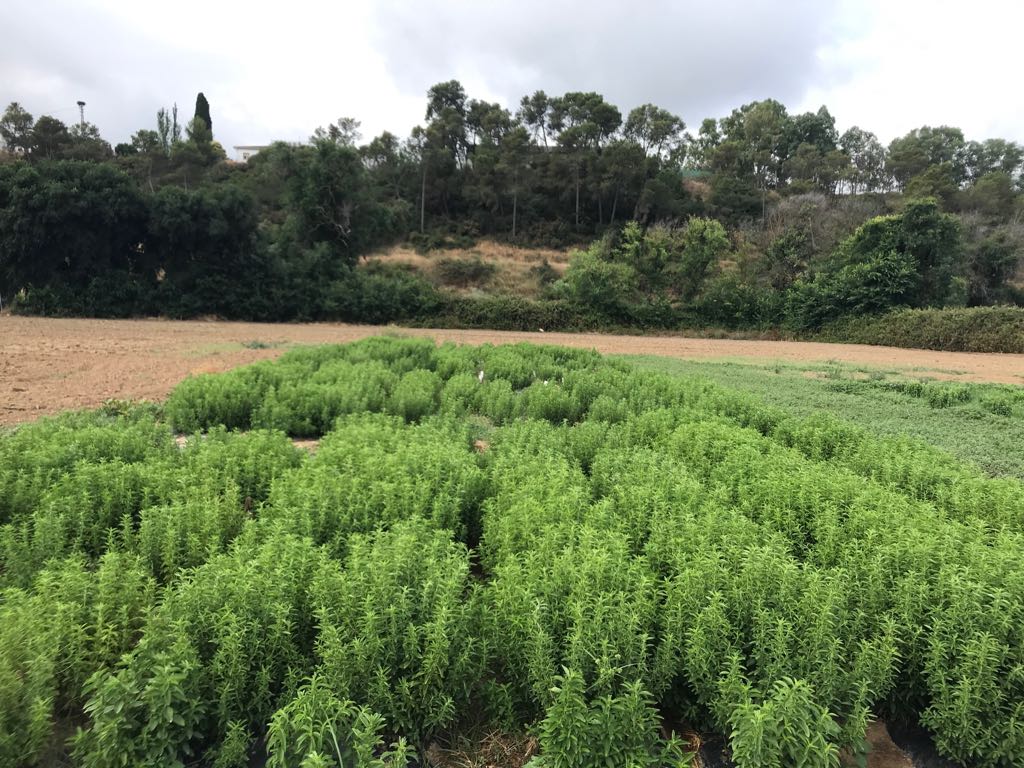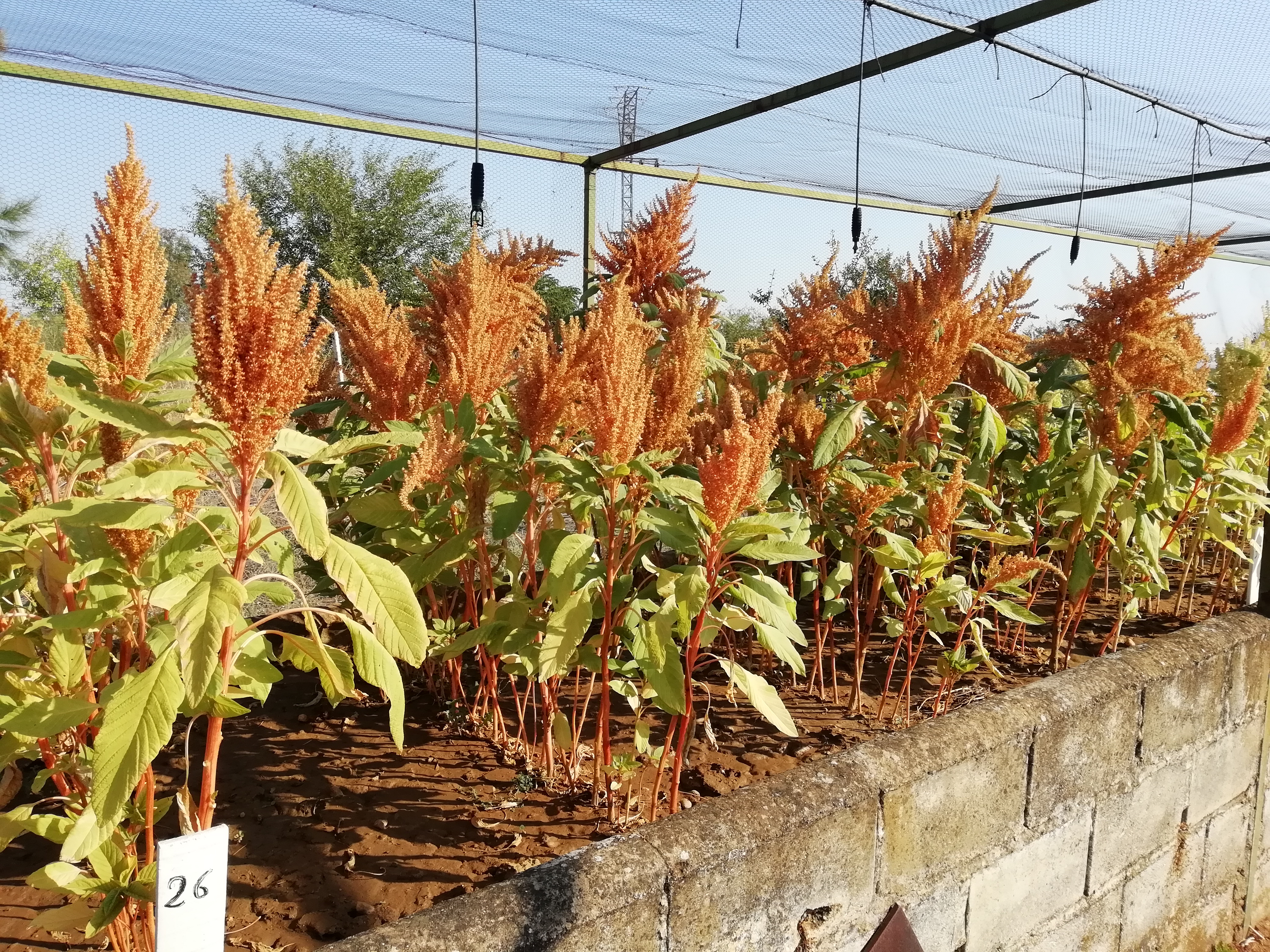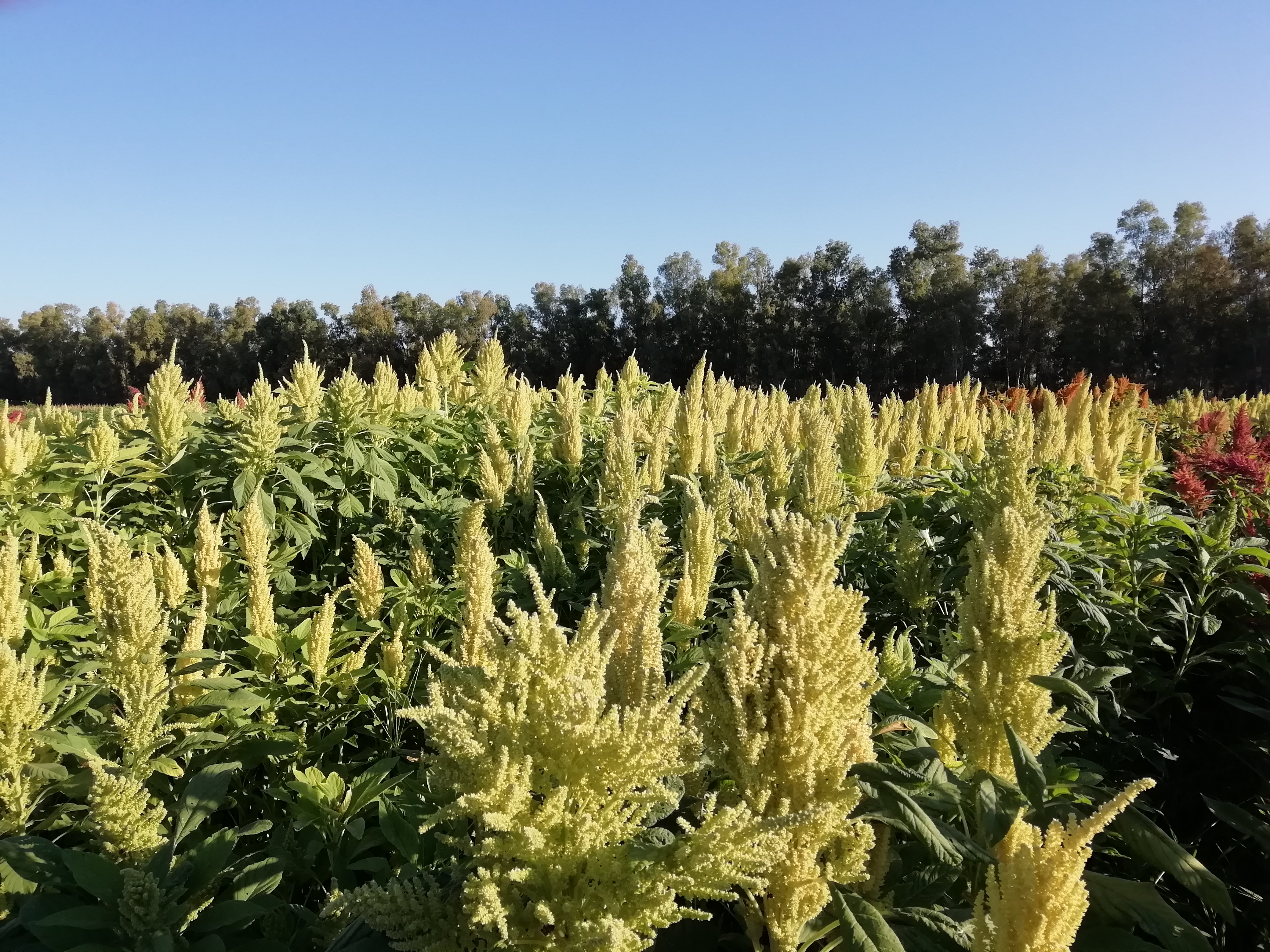
New highly-nutritional crops
 General information
General information
The current level of globalisation has brought an increase in the imports of raw foods coming from third countries which have highly competitive prices. This fact is especially intensified with unperishable products such as extensive crop grains, which can be stored and transported across large distances. This is the reason why one of the lines of work at CICYTEX is the search of high value-added alternatives to traditional extensive crops, where a differentiated quality may become a competitive advantage in terms of price thus contributing to improve farm profitability. Taking into consideration the new food trends, the increasing demand for health-related products, the crops that are being more highly valued in the market are those that stand out due to their nutritional properties, especially when they are associated also to food safety. The new food products in demand include healthy fatty acid compounds, balanced proteins, micronutrients, gluten-free flours and natural sweeteners.
Tests with species of high-nutritional value at CICYTEX
CICYTEX already works with several species to a lesser or greater extent, i.e.:
 Estevia (Stevia rebaudiana Bertoni)
Estevia (Stevia rebaudiana Bertoni)
Stevia is a plurennial herbaceous plant originated in South America that stands out for the sweetness of its leaves and accumulates substances called steviol glycosides, that are synthesised by the plant. Steviol glycosides have a strong sweetening power but do not affect people with diabetes and do not add calories to the body. Such sweeteners are present in the market in the form of concentrated extracts, but the dry leaf can also be used to prepare herbal teas.
 Amaranthus (Amaranthus spp.)
Amaranthus (Amaranthus spp.)
A crop originated in America, which yields a grain with similar properties to quinoa, with the advantage that it does not contain saponins (bitter substances) and therefore it does not require the elimination of such substances prior to consumption.
 Buckwheat (Fagopyrum esculentum Moench.)
Buckwheat (Fagopyrum esculentum Moench.)
It is referred to as a pseudo cereal, like quinoa and amaranthus, so it is not a type of wheat as such, in spite of its name. It stands out for its high-quality protein content and because it is gluten-free.
 Chia (Salvia hispanica L.)
Chia (Salvia hispanica L.)
A crop from America that stands out for being the plant source with the highest Omega 3 fat acid content, which is accumulated in the seed.
 Common hop (Humus lupulus L.)
Common hop (Humus lupulus L.)
A crop, the flower of which is used in the manufacture of beer.
 Adaptation to the soil and climate features of Extremadura
Adaptation to the soil and climate features of Extremadura
The study of new species requires the evaluation of their behaviour in conditions that are different to those in their original areas in the first place. Not all of them can adapt at the start. It will depend on the existing or available varieties, although this can be solved in time through genetic improvement, as has been the case throughout history with other crops originating in remote areas, such as tomatoes or corn. Sensitivity to the period of daylight and blossoming at high temperatures or resistance to low temperatures in the winter are, amongst others, determining factors that are under study at CICYTEX.
We perform an agronomic assessment in species with varieties that adapt to our conditions as well as a study of the date, dosage and planting system, together with the fertilisation and irrigation requirements or reuse of its waste amongst other aspects.
 Nutritional and functional characteristics
Nutritional and functional characteristics
As they are selected species on account of their nutritional and functional properties, once the adaptation capacity of certain varieties is assessed, chemical and biochemical composition characterisation is performed.
 New products and use of by-products
New products and use of by-products
On another line, a new line of work focusing on the manufacture of new food products based on new food crops has been developed, giving rise to certain snacks or cold drinks that are in line with new market demands.
CICYTEX has another line of work leading to the use of by-products deriving from agricultural and livestock farming activities which can generate an added value and improve farm sustainability, following the green and circular economy strategy.
Finally, in Continental Aquaculture formulation designs are made based on bioactive ingredients for feed.









